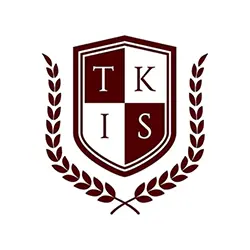Introduction To Secondary And High Schools In The UK
Education in the United Kingdom is a vital foundation for unlocking the potential of young individuals. With a rich tradition of excellence and diversity, the UK education system offers a variety of options that cater to different academic, developmental, and social needs. For parents, guardians, and students, understanding the nuances of secondary and high schools in the UK is essential for making informed decisions.
These institutions provide structured learning environments and equip students with the skills necessary for further education, vocational training, or entry into the workforce. This guide explores the structure, stages, and types of secondary and high schools in the UK, offering an in-depth look at the educational journey from ages 11 to 18.
Whether considering state-funded or independent schools, or innovative online options like Thomas Keith Online Independent School, this comprehensive overview aims to clarify the complexities of British secondary education while underscoring the important role these schools play in shaping students’ futures.
Overview Of The British Secondary Education System
Secondary education in the UK spans a significant phase of a student’s life, generally covering ages 11 to 16, with an optional extension to 18 for those pursuing advanced qualifications. During this time, schools aim to foster both academic proficiency and personal development, equipping students with skills necessary for further education, vocational training, or entering the workforce.
Key aspects of the UK secondary education system include:
- Structured Learning: Students progress through defined stages of learning, building upon their primary education.
- National and International Recognition: British qualifications, such as GCSEs and A-levels, are respected globally for their rigour.
- Diverse Options: From state-funded schools to fee-paying independent institutions, families can select from a variety of school types and curriculums.
- Pathways to Higher Education: Many secondary schools prepare students for university admissions through tailored academic programs.

Key Stages In British Secondary Schools
The secondary education system in the UK is divided into clear developmental and academic phases, each with distinct goals and assessments:
Key Stage 3 (Ages 11–14)
- Focus: This foundational stage introduces students to a broad and balanced curriculum, covering core subjects like English, Mathematics, and Science, along with Humanities, Arts, and Physical Education.
- Assessment: Regular teacher assessments monitor progress, but formal national exams are not conducted at this stage.
Key Stage 4 (Ages 14–16)
- Focus: Students narrow their focus, selecting subjects for their General Certificate of Secondary Education (GCSE) exams.
- Assessment: GCSE exams are taken at the end of this stage. These qualifications often determine a student’s next educational steps, whether into further education, vocational training, or employment.
Sixth Form (Ages 16–18)
- Focus: An optional stage, sixth form provides advanced education, typically through A-levels or equivalent qualifications like BTECs or the International Baccalaureate.
- Assessment: A-level exams or alternative assessments are critical for university admissions or specialised career paths.

Types Of High Schools In the UK
The UK boasts a wide variety of high schools, each offering unique approaches to education. Understanding the differences helps families choose the right fit for their children.
State Schools
State schools are publicly funded and follow the National Curriculum. They are accessible to all students without tuition fees.
- Comprehensive Schools: Accept students of all academic levels, offering a broad curriculum.
- Grammar Schools: Selective schools that require students to pass an entrance exam, often focusing on academic excellence.
- Academies: State-funded schools with greater autonomy in curriculum design, governance, and financial management.
Independent Schools
Also known as private schools, independent schools charge tuition fees and are not bound by the National Curriculum. They often provide smaller class sizes, tailored teaching methods, and enhanced extracurricular opportunities.
- Examples: The Thomas Keith Online Independent School, offering a virtual platform for students across the UK to access high-quality education.
Specialised Schools
Some schools focus on particular disciplines, such as performing Arts, Music, or Science, allowing students to develop expertise alongside standard academics.
Online High Schools
The rise of digital education has made online schools a viable alternative for many families. Accredited online institutions like Thomas Keith Online Independent School provide flexible, high-quality education based on the British curriculum. These schools cater to students who may require alternative learning environments, such as those in remote locations or with unique scheduling needs.
Curriculum And Subjects In British Secondary Schools
British secondary schools follow a broad curriculum that includes subjects like English, Mathematics, Science, Humanities, and Arts. During Key Stage 4, students focus on subjects for their GCSEs, choosing a combination that often includes core subjects and a selection of electives.
The curriculum in UK secondary schools is designed to provide a comprehensive education, combining core subjects with optional electives to suit students’ interests and career aspirations.
Core Subjects
- English Language and Literature
- Mathematics
- Science (including Biology, Chemistry, and Physics)
Optional Subjects
Students typically select additional subjects during Key Stage 4 for their GCSE exams. Options often include:
- History and Geography
- Modern Foreign Languages (e.g., French, Spanish, German)
- Creative Arts (Art, Drama, Music)
- Technology and Computing
- Vocational Subjects (Business Studies, Design and Technology)
Sixth Form Focus
During sixth form, students specialise further, often studying three to four A-level subjects or equivalents. This stage is critical for university admissions, with many students choosing subjects aligned with their desired career paths.

Advantages Of The UK Secondary Education System
The UK education system offers numerous advantages:
- Globally Recognised Qualifications: GCSEs and A-levels are respected internationally, offering pathways to prestigious universities worldwide.
- Flexibility: A broad curriculum allows students to explore diverse fields of study.
- Tailored Education: The range of school types ensures that students with varying needs and abilities can find suitable options.
- Extracurricular Opportunities: Independent and specialised schools often provide extensive programs in sports, arts, and community service.
FAQs
1. What are the main differences between GCSEs and A-levels?
- GCSEs are qualifications typically taken at age 16 at the end of Key Stage 4. They cover a broad range of subjects, and students are required to take a variety of core subjects, such as English, Mathematics, and Science. These exams are crucial for determining a student’s eligibility for further education or vocational training.
- A-levels (Advanced Level) are taken in the final two years of secondary school (ages 16-18) during sixth form. A-levels allow for more in-depth study of a smaller number of subjects (typically 3 or 4), and they are the main qualification used for university admissions in the UK.
2. What is the National Curriculum in the UK?
The National Curriculum outlines the subjects and content that children in state schools in England are required to study. It ensures a consistent, broad education across schools, covering subjects such as English, Mathematics, Science, History, and more. It is divided into key stages, with specific learning objectives for each stage. Independent schools are not required to follow the National Curriculum but often provide similar coverage.
3. What are the main exams at the end of Key Stage 4?
At the end of Key Stage 4 (usually at age 16), students take their GCSE exams in a range of subjects. These exams are important for determining students’ qualifications and their options for further education or employment. GCSEs are typically assessed via written exams, coursework, or practical assessments, depending on the subject.
4. What is a “sixth form” college, and how is it different from a school?
A sixth form college is a type of educational institution for students aged 16-18. It primarily offers academic qualifications like A-levels, BTECs, or vocational qualifications. Sixth form colleges tend to focus more on preparing students for higher education and are separate from the secondary schools where students spend their earlier years (Key Stage 3 and 4). Many schools also have their own sixth form programs, so the term “sixth form” can refer to both dedicated colleges and the final two years of a school.
5. How are GCSEs graded in the UK?
Since 2017, GCSEs are graded using a number scale from 9 to 1 (with 9 being the highest). This new grading system replaces the traditional A* to G grading. A grade 4 is considered a “standard pass,” and a grade 5 is a “strong pass,” indicating that a student has achieved a higher level of proficiency in that subject. For students who do not achieve a grade 4 in key subjects like English and Mathematics, there may be opportunities to retake the exams.
6. Can students in the UK take vocational qualifications instead of GCSEs or A-levels?
Yes, students can take vocational qualifications such as BTECs (Business and Technology Education Council) or NVQs (National Vocational Qualifications) as an alternative to GCSEs and A-levels. These qualifications focus more on practical skills and are widely recognised by employers and higher education institutions. Vocational qualifications are especially useful for students pursuing careers in industries like health and social care, engineering, business, or the creative arts.
7. How do I apply for university in the UK after sixth form?
Applications for university in the UK are processed through the UCAS (Universities and Colleges Admissions Service) system. After completing A-levels or equivalent qualifications, students apply through UCAS to their chosen universities, selecting up to five courses. The application process includes submitting personal details, predicted grades, a personal statement, and references. Offers are typically conditional on students meeting the required A-level grades.
8. What is a “grammar school,” and how does it work?
A grammar school is a selective secondary school that admits students based on academic performance in an entrance exam, usually taken at age 11 (known as the 11+ exam). Grammar schools are more academically rigorous and often offer a challenging curriculum with a focus on subjects like Mathematics, English, and the Sciences. Entry is competitive, and grammar schools generally cater to students who perform at a higher academic level.
9. Are special educational needs (SEN) supported in UK secondary schools?
Yes, all UK secondary schools must make provisions for students with special educational needs (SEN). This can include students with physical disabilities, learning difficulties, or behavioral issues. Schools may provide additional support through specialised teachers, learning assistants, or tailored lesson plans. SEN support can vary by school type, with some schools offering more extensive resources and programs for students with additional needs.
10. What is the school day like in a UK secondary school?
The typical school day in a UK secondary school runs from around 8:30 AM to 3:30 PM. Students attend around 5–7 lessons each day, with breaks in between. There is usually a 15–20 minute morning break and a longer lunch break of 45 minutes to an hour. The exact structure can vary depending on the school, but students will generally follow a timetable that includes a mix of core subjects (like English and Mathematics) and optional subjects based on their choices.
11. Can students in the UK study abroad during secondary education?
Yes, some UK secondary schools, especially independent schools, offer opportunities for students to study abroad for a term or year as part of a study abroad program. Additionally, there are international schools in the UK that offer programs tailored to students from different countries. Students wishing to study abroad for part of their secondary education may also apply for exchange programs or opt for online schooling like the Thomas Keith Online Independent School, which enables students from anywhere to access UK curriculum education.
12. What are academies, and how do they differ from other state schools?
An academy is a state-funded school in the UK that operates with more autonomy than traditional state schools. Academies are funded directly by the government rather than by the local authority, allowing them greater freedom in areas such as curriculum design, staffing, and finances. While academies still follow the National Curriculum, they have more flexibility in how they deliver it and may focus on specific educational strategies, such as specialised subjects or teaching methods.
13. How do parents find the right secondary school for their children in the UK?
Parents can research secondary schools through local school inspections (Ofsted reports) and by attending open days. The UK government provides information on the performance and inspection ratings of state schools on its Gov.uk website. Independent schools also publish inspection reports and often provide tours for prospective families. Parents can apply to schools via their local education authority (LEA), especially for state schools, which may involve applying online or filling out an application form to be submitted by specific deadlines.

Conclusion
The UK secondary education system is renowned for its diversity and ability to cater to students of all interests and abilities. Secondary and high schools in the UK, whether state-funded, independent, or innovative online platforms like the Thomas Keith Online Independent School, offer tailored education that meets a wide range of needs. With a structured curriculum, globally respected qualifications such as GCSEs and A-levels, and a variety of academic and vocational pathways, these schools provide pupils with a solid foundation for their futures. Secondary and high schools play a crucial role in preparing young people for higher education, vocational training, or entering the workforce, equipping them with the skills and confidence to excel in their chosen paths. By understanding the unique options and opportunities available, families can make well-informed decisions about the educational journey of their children. Ultimately, the UK’s secondary and high schools foster lifelong learning and development, ensuring students are ready to meet the challenges of an evolving world.




